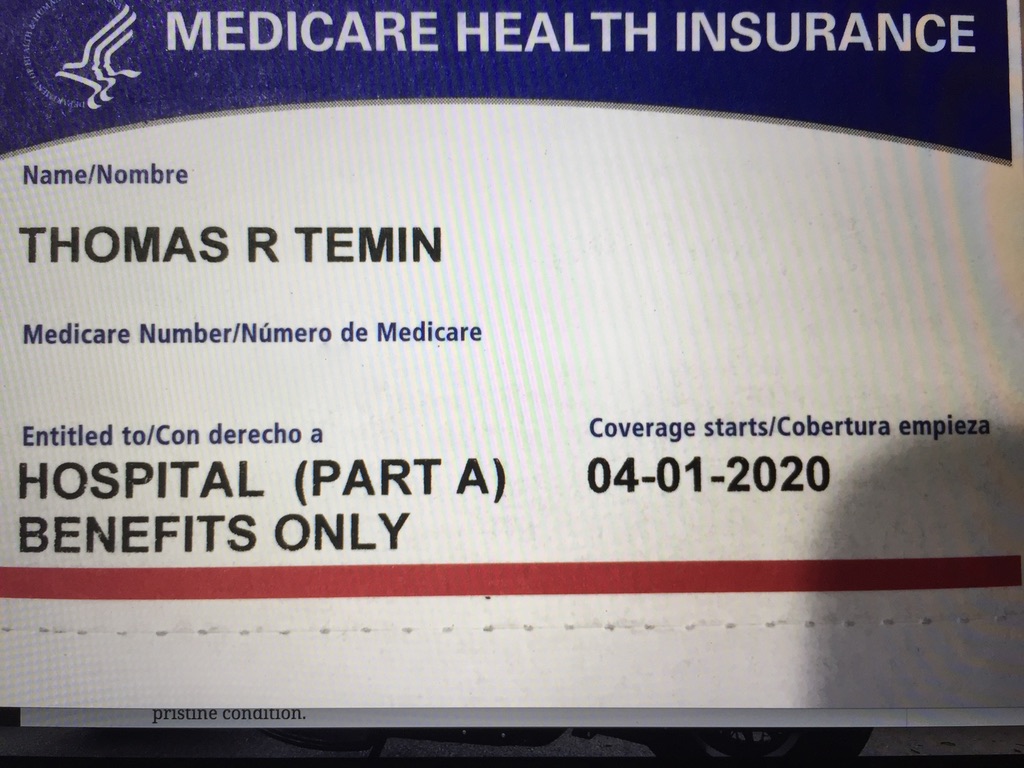While contemplating the quickly shrinking circumference of daily life Friday, I walked outside to get the mail. There is was, the envelope from the federal government I’d been waiting for.
When the government says your Medicare card is coming, it means card — as in cardboard. Ahead of the big six-five birthday, I signed up. You have to sign up. Dawdle too far past your birthday, and you pay a penalty for the rest of your life.
Anyhow, it seemed like a big deal when the ordinary envelope arrived from 7500 Security Boulevard in Baltimore. I opened it at the time Friday evening when Robin prepares Shabbat dinner and I mix the martinis we sip before lighting the candles and tearing into the challah.
I don’t know why, but I expected the Medicare card to be more … impressive. A nice, hard plastic thing like a driver’s license or your first credit card. But that’s not how the government does it, especially given that I am one of 10,000 Americans who will turn 65 on April 9th alone. No, you get a card of heavy paper, bordered by perforations on a #10 envelope-sized piece.
I still have my original Social Security Card. While in high school I took it to the AV department (audio-visual for you young ‘uns) where, parked between the Bell & Howell 16mm movie projectors and the Audiotronics record players, sat a laminating machine. Laminated, the card has lasted in pristine condition.
With months to spare, I became officially old, soon to be on Medicare Part A, for hospitalization. The last time I was hospitalized was 46 years ago, when I had minor foot surgery — the kind of thing nowadays they’d do in 15 minutes at an outpatient surgery center. I hope it’s another 46 years before I spend another night in a hospital.
It struck me how the milestones in our lives are underscored by wallet-sized bits of paper and plastic. Somewhere along the line I lost my draft card, although I understand it’s possible to get a replacement from the National Archives and Records Administration. I also lost the card from my year-long membership in the now-defunct International Typographical Union from the late 1970s. It still may be tucked into one of the boxes in the basement.
My current union sends heavy plastic cards every six months. Every year I get a fresh plastic card and a nice pin for my motorcycle vest from H.O.G — Harley Owners Group.
I still have a circa 1964 Beatles card of Paul McCartney — these were the size of baseball cards and popular at the height of Beatlemania — on which someone pasted a tiny black-and-while picture of my face cut from a school photo.
My earliest artifact is a business card from a mohel in Cleveland, on which he penned information constituting a receipt for my b’ris: $25. We found this among my father’s papers after he died a few years ago.
Some documents have temporary value. We just had our garage walls and ceiling refinished. In discarding about a third of what was in there, I found several instruction booklets from lawnmowers and gas weed trimmers we got rid of long ago. They were in an old milk carton mixed with a dozen pairs of disintegrating garden gloves, a pile of ancient towels and some old shop rags. At the bottom lay a mouse skeleton.
Other temporal documents are harder to discard. The receipt to my mother-in-law’s 1972 Valiant. Opera tickets from a significant wedding anniversary…and a ticket to Stephen Strasburg’s first home game in Washington. Scraps from vacation trips. The Polaroid of a long ago pet parrot. They don’t have real value, except to mark where you’ve been and their power to evoke memories of people and scenes.
I’m thinking an old-fashioned scrap book might be the way to preserve these things and reduce some of the clutter in the house.
